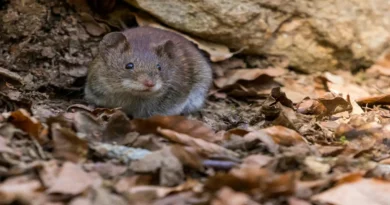Sliding Channel: What You Need to Know for Better Performance
How Sliding Channels Improve Movement and Functionality

Table of Contents
ToggleArticle Summary
A sliding chanel is a versatile and efficient component widely used in different industries, especially in construction and manufacturing. It provides an easy way to move or adjust equipment along a track or surface. This article explores what a sliding channel is, its types, applications, and benefits. We will also discuss how to choose the right sliding channel for your needs, along with tips on installation and maintenance. Whether you’re working on a DIY project or managing a larger construction task, understanding the role of sliding channels is essential for improving efficiency and performance.
Introduction to Sliding Channel
A sliding channel is a mechanical system that allows the smooth movement of objects along a track or surface. It is designed to facilitate easy movement, reducing friction and wear. This component is commonly used in industrial settings, warehouses, and construction projects. Its primary function is to guide and support moving parts, such as doors, windows, or other machinery, ensuring their smooth operation.
But what makes sliding channels so important? Let’s dive deeper into how these components work, their different types, and how they can benefit you in various applications.
What is a Sliding Channel?
A sliding channel consists of a long, narrow track designed to support and guide a moving object or component. Often made of metal, aluminum, or steel, the sliding channel ensures that the object moves smoothly without binding or sticking. These channels are designed to support sliding doors, windows, cabinets, and even complex machinery.
The sliding channel is a key element in many industries. It enables the safe and efficient movement of parts, reducing downtime and enhancing productivity.
Types of Sliding Channels
Sliding channels come in several types, each tailored for specific applications. Understanding the differences between them can help you choose the right one for your needs.
-
Standard Sliding Channels
These are the most common types used in residential and commercial construction. They are typically used for sliding doors, windows, and cabinets. Standard sliding channels are available in various sizes and materials to accommodate different weights and uses. -
Heavy-Duty Sliding Channels
As the name suggests, heavy-duty sliding channels are built for more demanding applications. These are used in industrial machinery, large doors, and other situations where a substantial load is being moved. They are constructed with stronger materials to bear heavier loads and ensure longer durability. -
Miniature Sliding Channels
For smaller, more delicate applications, miniature sliding channels are used. These are found in electronic devices, small machinery, and even some types of furniture. -
Adjustable Sliding Channels
These channels are designed to allow flexibility in their positioning. They are commonly used in applications where the movement of the sliding object needs to be adjusted or aligned regularly. The adjustable nature makes them ideal for custom-built furniture and specific industrial machinery.
Applications of Sliding Channels
Sliding channels are used in a wide variety of applications across different industries. Let’s explore some of their most common uses:
-
Construction Industry
Sliding channels are widely used for doors and windows. They make it easier to install and operate sliding doors in homes, offices, and commercial buildings. These doors move smoothly along the channel, offering convenience and energy efficiency. -
Automotive Industry
Sliding channels are used in car manufacturing for assembly lines and in the design of sliding components, such as sunroofs, seats, and windows. The smooth operation of these parts relies on well-designed sliding channels. -
Furniture Manufacturing
In furniture, sliding channels are used in drawers, cabinets, and sliding panels. The smooth movement of these parts is crucial for functionality and comfort. -
Industrial Machinery
Heavy-duty sliding channels are used to facilitate the movement of heavy machinery parts. These are essential in factories and warehouses where large objects need to be moved frequently and safely. -
Storage and Organization Systems
Sliding channels help in creating efficient storage systems, including sliding racks, shelves, and cabinets. This is especially beneficial for organizing materials in warehouses or homes with limited space.
Benefits of Using Sliding Channels
Sliding channels provide several advantages that make them a preferred choice in many industries. Here are some of the key benefits:
-
Smooth Movement
The primary function of a sliding channel is to ensure smooth movement along a fixed path. This helps prevent wear and tear on equipment and ensures the longevity of the moving parts. -
Space Efficiency
Sliding systems take up less space compared to hinged doors or other types of mechanisms. This makes them ideal for areas where space is limited, such as small apartments, offices, or storage rooms. -
Reduced Maintenance
Sliding channels, especially those made from high-quality materials, are low maintenance. They do not require frequent adjustments or repairs, which makes them a cost-effective option in the long run. -
Customization Options
Sliding channels come in various sizes and materials, which means you can easily customize them to fit your specific needs. Whether you need something for a lightweight door or a heavy-duty industrial application, there is a sliding channel option for you. -
Aesthetically Pleasing
Sliding doors and windows are often chosen for their sleek, modern look. They contribute to a contemporary design while providing the functionality of easy access and space-saving.
How to Choose the Right Sliding Channel
Choosing the right sliding channel depends on several factors, such as the type of application, load requirements, and space constraints. Here’s what you should consider when making your choice:
-
Material
The material of the sliding channel affects its durability and performance. Common materials include stainless steel, aluminum, and galvanized steel. Choose a material based on factors such as load-bearing capacity, environmental conditions, and aesthetic preferences. -
Load Capacity
Make sure to select a sliding channel that can handle the weight of the object or equipment that will be moved. Heavy-duty applications require stronger channels, while lighter-duty tasks can be managed with standard models. -
Size and Length
The size and length of the sliding channel will depend on the space available and the size of the object being moved. Measure the dimensions carefully before purchasing. -
Maintenance Needs
Some sliding channels require more maintenance than others. For example, channels used in outdoor applications may need more frequent cleaning to prevent dirt buildup and corrosion. Choose a channel that fits your maintenance preferences. -
Cost
While it’s essential to choose a high-quality sliding channel, it’s also important to stay within your budget. Consider the long-term costs of installation and maintenance when evaluating the price of the sliding channel.
Installation of Sliding Channels
The installation of a sliding channel is relatively straightforward but should be done carefully to ensure smooth operation. Here are the steps typically involved:
-
Prepare the Track
First, mark the installation area and ensure that the surface is clean and smooth. Measure the area where the channel will be placed and ensure the track is level. -
Fix the Track
Secure the sliding channel to the designated area using screws or fasteners. Ensure it is firmly in place to avoid any instability. -
Install the Sliding Mechanism
Attach the sliding mechanism to the moving object, whether it’s a door, window, or piece of machinery. Ensure the parts are aligned and move smoothly along the track. -
Test the System
Once the sliding channel is installed, test the movement of the object. Make sure it slides smoothly without obstruction. If needed, make adjustments to ensure optimal performance.
Maintenance Tips for Sliding Channels
To keep your sliding channel in good working condition, follow these simple maintenance tips:
-
Regular Cleaning
Clean the sliding channel regularly to remove any debris or dirt that might accumulate. This helps reduce friction and wear on the track. -
Lubrication
Apply lubricant to the sliding mechanism to ensure smooth movement. Regular lubrication prevents rust and corrosion. -
Inspection
Periodically inspect the sliding channel for any signs of damage or wear. Replace any worn-out parts to maintain the system’s performance. -
Check for Alignment
Ensure that the sliding parts remain aligned to avoid any operational issues. Misalignment can cause the sliding system to jam or function poorly.
Conclusion
Sliding channels are essential components in various industries, offering smooth, efficient movement for a wide range of applications. Whether for construction, machinery, or furniture, sliding channels improve functionality and optimize space. Choosing the right sliding channel and maintaining it properly ensures long-term reliability and performance. By understanding the different types of sliding channels and their uses, you can make informed decisions to meet your needs.
Frequently Asked Questions (FAQs)
What is a sliding channel used for?
A sliding channel is used to guide and support moving objects along a fixed path, ensuring smooth and efficient movement. It is commonly used in sliding doors, windows, and industrial machinery.
How do I choose the right sliding channel for my needs?
Consider the material, load capacity, size, and maintenance requirements when selecting a sliding channel. Choose one that suits your specific application, whether it’s for heavy-duty industrial use or a lightweight residential project.
Can sliding channels be used for heavy machinery?
Yes, heavy-duty sliding channels are specifically designed to handle the movement of heavy machinery. They are made from strong materials to ensure durability and smooth operation.
How do I install a sliding channel?
To install a sliding channel, clean the surface, fix the track in place, attach the sliding mechanism to the object, and test the movement to ensure everything works smoothly.
How can I maintain a sliding channel?
Regular cleaning, lubrication, and periodic inspections can help maintain a sliding channel. Check for misalignment and replace worn-out parts as needed.
Are sliding channels expensive?
The cost of sliding channels varies based on material, size, and load capacity. However, investing in high-quality sliding channels ensures long-term durability and reduces maintenance costs.
Citation and Disclaimer
The information provided in this article is for educational purposes only. While every effort has been made to ensure its accuracy, the author and publisher do not accept responsibility for any errors or omissions. Always consult with a professional before making decisions related to sliding channels and installation.





